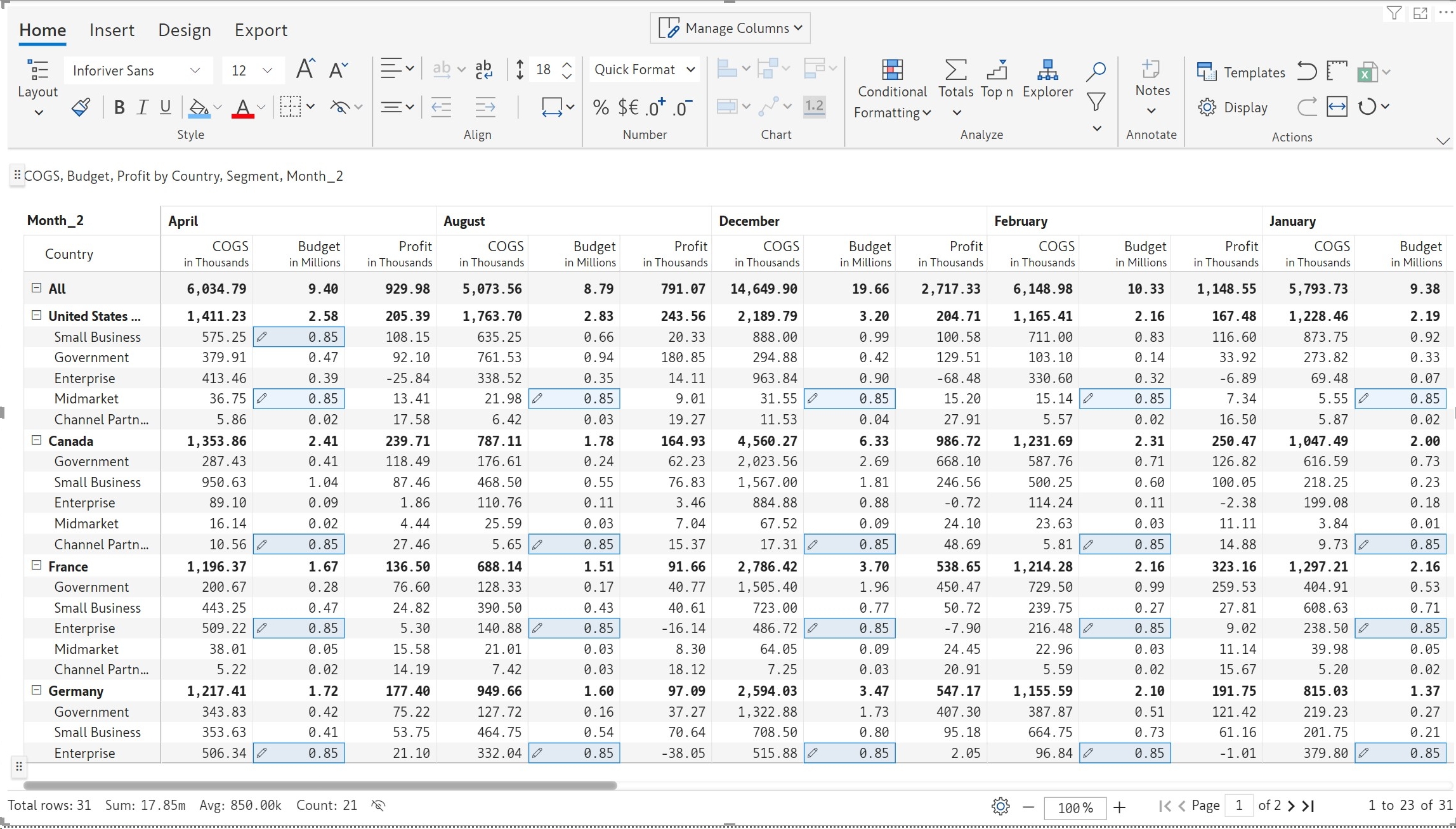Editing cells
Premium Table allows you to edit the contents of a cell and apply calculations. These are visual-level updates and will not impact the source dataset.
1. Overwriting values
To overwrite an existing value, simply double-click on the cell and enter the new value. You can enter scaled values (250m, 5.6b, etc.) or reference other cell values.
Double-click on a cell as shown in the image. A formula bar is enabled below the toolbar. Type in a value and click Enter. Note that Premium Table allows entry of scaled values (e.g., 45.3m instead of 45,300,000).

The value gets updated and the manual update can be identified by the pencil icon in the cell. The total row is also updated to include the value entered.

You can even reference other cells and apply formulas to them using the cell editor. You can define simple mathematical operations such as A +/- B, etc.

2. Apply formulas
You can use the wide range of formulas and functions available in Premium Table while editing a cell. In the below example, we are using the 'Average' function. As you start typing, you can see the functions that match the entered text as a list. Click on 'Average'.
2.1. Click on the arrow icon to see more information, such as the arguments and examples.

2.2. You can click on any cell, and it gets automatically populated as shown below.

2.3. We can reference multiple cells in a formula. Click the ![]() button or press Enter to apply the formula.
button or press Enter to apply the formula.

3. Updating multiple cells
You can also override the data in multiple cells with the same value, for instance, set a fixed budget. Select the cells and update the value in any cell; the updated value will be cascaded to all the selected cells.

4. Renaming Row Categories
You can also rename row categories by double-clicking on them.

Last updated
Was this helpful?